ARLINGTON, VA. — The sale of its U.S. confectionery business in April demonstrates the commitment of Nestle S.A. to taking bold steps necessary for future growth, said Rui Barbas, Nestle USA’s chief strategy officer. Divestitures and acquisitions are among several tools Nestle will deploy to succeed in the rapidly changing food and beverage business, he said.
In the past Mr. Barbas has said a one-dimensional approach would not be sufficient for success, and in an Aug. 1 interview with Food Business News, he described in greater detail the levers Nestle sees as keys to growth going forward.
“There is rapid change in the way consumers eat, shop and engage with brands and also what we expect from brands in terms of social value as well as experience from products,” he said. “There is a fundamental transformation going on. The way we are approaching long-term healthy growth is through a hybrid growth model.”
Mr. Barbas said the model revolves around four interrelated “key levers”:
- Strengthening the company’s heritage brands/base business, through innovation and renovation
- Pursuing new internal and external innovation models, including finding ways to establish start-ups under the Nestle corporate umbrella
- Ensuring the portfolio encompasses categories giving Nestle a pathway to growth
- Investing tactically behind growth-enabling technologies and capabilities.
His comments followed criticism earlier in the summer by a hedge fund manager who has described Nestle’s strategy as “muddled.” Nestle’s stock market performance in recent years has been disappointing. Over the past five years, the company’s shares have climbed 21%, versus 43% for Unilever, 71% for the S.&P.500 and 33% for the S.&P. Consumer Staples index.
While Nestle’s U.S. confectionery business featured prominent brands such as Butterfinger and Baby Ruth, the business accounted for only 1% of Nestle’s global sales and about 3% of Nestle Americas sales.
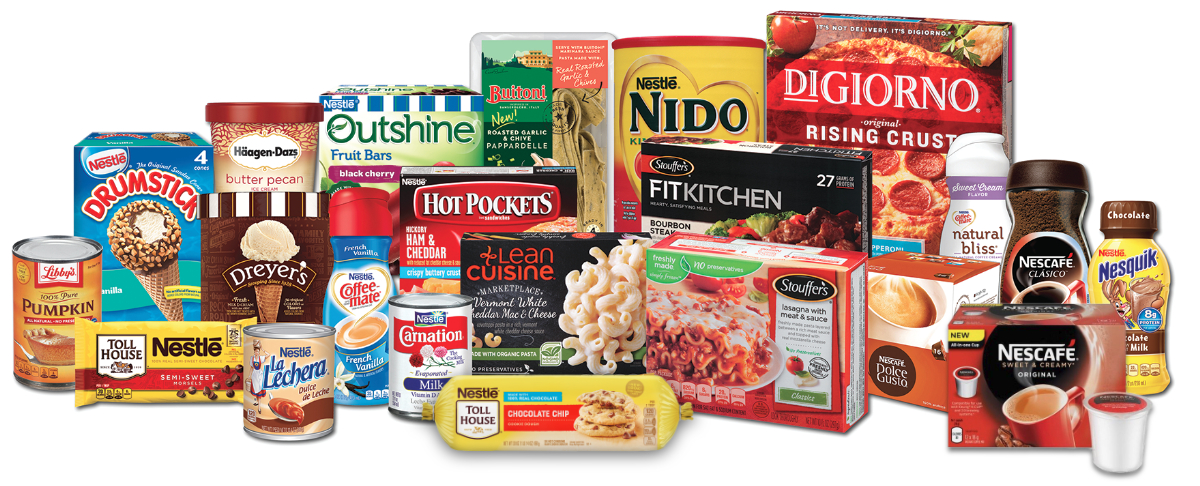
Without confectionery, Nestle remains a prominent player in several prominent North American food and beverage categories, including frozen pizza and other refrigerated and frozen products, under brands such as DiGiornos, Stouffer’s and Hot Pockets; drinks such as Nesquik and Ovaltine; coffee brands like Nescafe, Nespresso, Coffee-mate and, pending approvals, Starbucks at retail; ice cream brands including Edy’s and Häagen-Dazs; baking brands including Toll House; Purina pet foods; and numerous water brands.
With leading positions in several of these categories, Nestle is confronting the challenge of rapid marketplace change, not just in what consumers consume, how those products are optimally produced and packaged, where consumers make their purchases and how to best reach them with marketing messages.
Strengthening the base
While acknowledging the importance of successfully nurturing existing brands, Mr. Barbas chafed a bit at the label “heritage brand.”
“A lot has been said in the industry between old brand and new brands,” he said. “The way I look at it, there are no heritage brands. The question for any brand is whether it is relevant from a consumer standpoint. There has been market share evolution in brands like Nesquik, Häagen-Dazs, Coffee-mate, Toll House and Nescafe. Those are heritage brands that are growing very fast and gaining market share.”
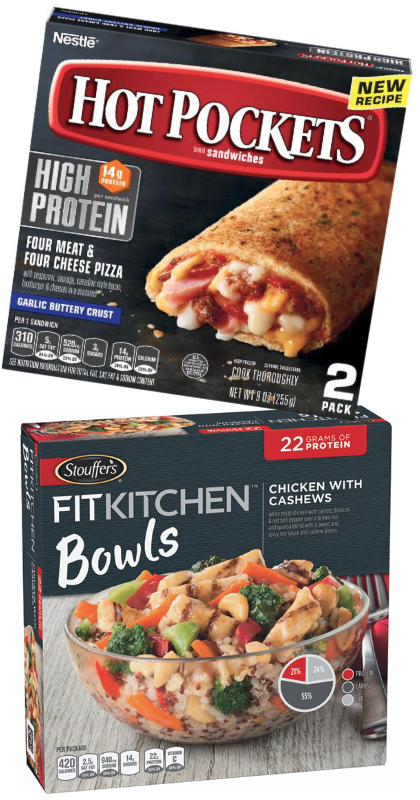 Recent efforts in the company’s frozen meal portfolio have sought to make brands like Stouffer’s and Lean Cuisine more relevant, build out the company’s creamer business and included pursuit of organic/natural selections. These are examples of ways Nestle “takes our heritage brands into new territory,” Mr. Barbas said.
Recent efforts in the company’s frozen meal portfolio have sought to make brands like Stouffer’s and Lean Cuisine more relevant, build out the company’s creamer business and included pursuit of organic/natural selections. These are examples of ways Nestle “takes our heritage brands into new territory,” Mr. Barbas said.
Under the Stouffer’s brand, Nestle has introduced a Fit Kitchen line addressing demand for products with higher protein and healthier carbs, he said.
“Hot pockets are moving into two interesting consumer trend categories,” Mr. Barbas said. “One is snacking, which we all know is a high growth territory in America. The second element is high protein propositions. So you see the new Hot Pocket range has enhanced protein content, which is very important in today’s diet.”
Two new Hot Pocket varieties with “high protein” flagged on the package front included Steak and Cheddar and Four Meat and Four Cheese Pizza.
The Coffee-mate brand has broadened its offering into an ever-wider range of formats, most recently with a line of ready-to-drink coffee beverages. Sold under the name Coffee-mate natural bliss cold brew coffee, the product is sold under sweet cream and mocha flavored varieties.
“These are examples of taking consumer brands and constantly aligning them with where consumers are going,” Mr. Barbas said.
New innovation models
“There is a traditional way of innovating,” Mr. Barbas said. “Given the kinds of change under way today, we also are trying to create necessary conditions within Nestle to be faster in our innovation.”
Efforts toward this new approach already have begun to yield positive results, Mr. Barbas said.
“When we launched Wildscape, which is a super premium frozen food line, or Outsiders Pizza Company, which is original premium pizza, they were launched like they were a start-up,” he said. “From idea to launch is targeted at less than nine months and even faster in some circumstances.”
Both Outsiders and Wildscape were created through Foundry Foods, an innovation incubator backed by Nestle USA. Foundry specializes in food and beverage concept development among a range of services geared toward the rapidly changing food business.
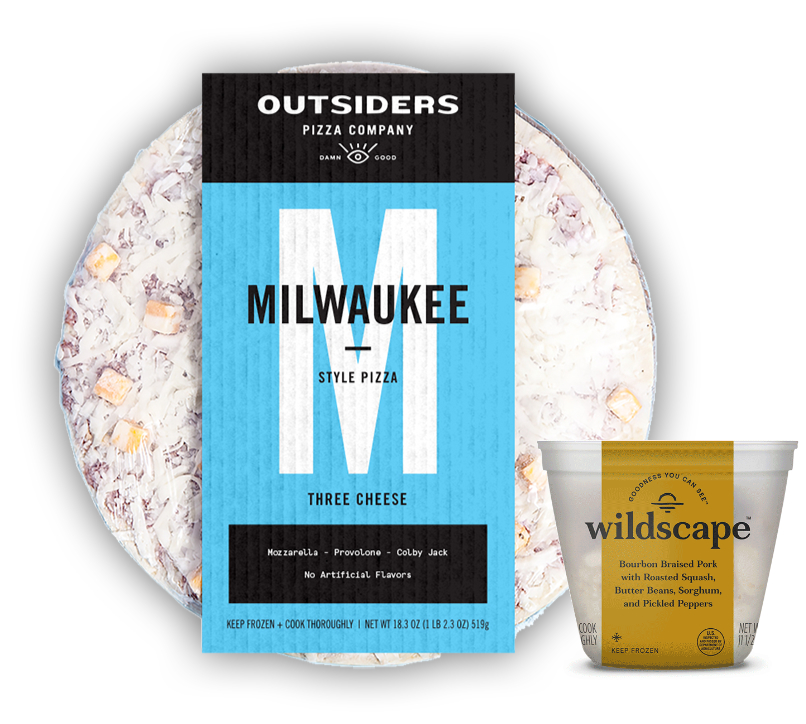
“This is what I mean by internal innovation models in which we don’t go through cycles of research, and research and research,” Mr. Barbas said. “It’s a very different innovation model and complements, does not replace, the existing innovation model.
“This fall we will have some very exciting introductions in the marketplace, leveraging the new innovation model.”
Another incubation initiative was launched in June 2017 with the creation of the Terra Food + Ag Tech Accelerator program, a partnership between Nestle, Rabobank and RocketSpace. The latter organization is a San Francisco-based group described as a “global ecosystem” helping innovators bring their ideas to market.
“They are a well-known incubator in Silicon Valley,” Mr. Barbas said.
The objective again is to bring the “ingenuity and creativity of start-ups” and find ways to complement those qualities with the capabilities of Nestle. The partnership has generated products that have been launched regionally and are “picking up a lot of steam,” he said.
More broadly, Mr. Barbas said the start-up ecosystem is “very buoyant.”
Portfolio management
Optimizing the business mix within Nestle USA requires additional steps, including acquisitions and divestitures, Mr. Barbas said.
“It’s about going where the consumer is going,” he said. “What are the high growth territories where Nestle has the right to play? Sometimes it comes down to acquisitions.”
In addition to the sale of the confectionery business, major moves among an extended list of such transactions in recent years was the announcement in May that Nestle had entered into an agreement with Starbucks Corp. to market and distribute Starbucks coffees and teas around the world. For the right, Nestle will pay $7.15 billion.
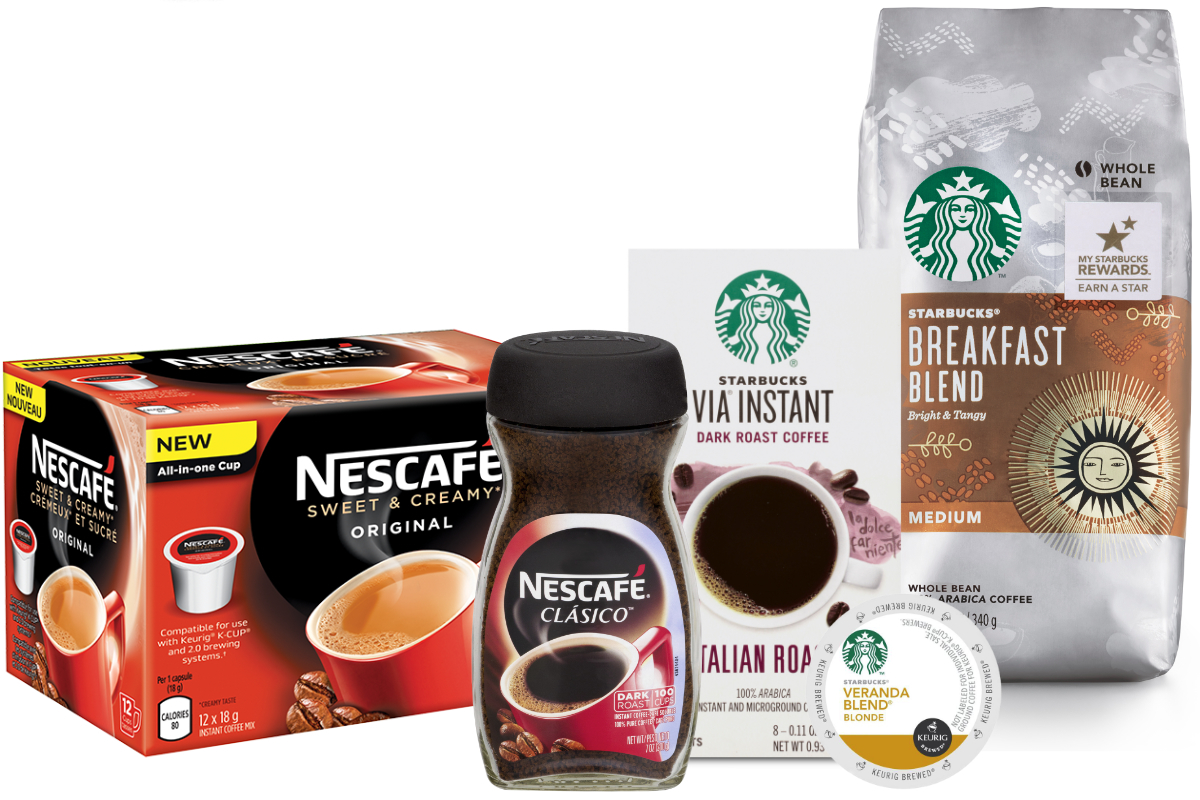 “We haven’t been shy about making acquisitions,” Mr. Barbas said. “Over the last 18 months, we have acquired Blue Bottle Coffee, Chameleon Cold Brew, Sweet Earth, direct to consumer, and we made this exciting alliance with Starbucks.”
“We haven’t been shy about making acquisitions,” Mr. Barbas said. “Over the last 18 months, we have acquired Blue Bottle Coffee, Chameleon Cold Brew, Sweet Earth, direct to consumer, and we made this exciting alliance with Starbucks.”
He said the Starbucks deal will position Nestle as No. 1 in coffee, with additional brands that include Nescafe and Nespresso.
“Think about consumer trends and the reality of single serve,” he said. “We now have a unique suite of brands that allows us to capture the coffee opportunity. The Starbucks acquisition has global dimensions, including the U.S., which is my purview.”
While Nestle has made numerous changes to realign its portfolio, Mr. Barbas said no one should expect the activity to cease.
“We are very pleased with the moves we have made in our portfolio, including the acquisitions, which have positioned us for growth,” he said. “These will never fully stop. The consumer will never stop to evolve. We’re very pleased with where we are. Nestle has been in business for 152 years, and portfolio change is part of our DNA.”
Embrace disruptive technology
It has become an axiom in 21st century business management that no industry is immune from technological disruption, and investment in technology is the fourth cornerstone of Nestle’s growth strategy.
Mr. Barbas said disruption touches every corner of Nestle’s business, and the company must keep pace. Companies that sell into e-commerce, the club channel, the dollar channel, the convenience channel, the mass channel, etc., must provide a range of packaging configurations, which creates practical challenges from a manufacturing standpoint, he said.
“We live in an omnichannel world,” he said. “It’s also all about digital communication and dialogue. The digital market is a core for us. So is investment in flexible manufacturing. “
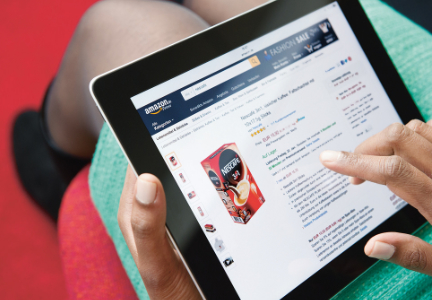 These changes are interrelated, Mr. Barbas said. For example, the omnichannel world creates certain disadvantages for companies like Nestle that “were built for scale,” he said, noting the widely varied packaging configurations necessary for the different channels.
These changes are interrelated, Mr. Barbas said. For example, the omnichannel world creates certain disadvantages for companies like Nestle that “were built for scale,” he said, noting the widely varied packaging configurations necessary for the different channels.
“We are really leveraging analytics and technology as a weapon to win in the marketplace,” Mr. Barbas said. “Technology enabled analytics will provide insights we will need going forward. Consumer insights. Customer insights. Manufacturing insights. We are investing behind enterprise analytics. Predictive analytics are important for our transportation system here. Enterprise analytics are being used across our operations these days, even when we hire people and find talent. We are also leveraging analytics to get the right talent at the right time.”
As an example, Mr. Barbas said advanced analytics have been helpful to the company in dealing with severe storms.
“By leveraging analytics, we are able to predict better what will happen, and redeploy our operations in a faster and more agile way to respond to marketplace changes, to predict what might happen and better deploy our stock to respond to consumer demand.
“You can know in real time how a storm is progressing. It is what happened in Texas last year. In Puerto Rico as well. Our analytical suite allowed us to be faster in restocking product on shelves.”




